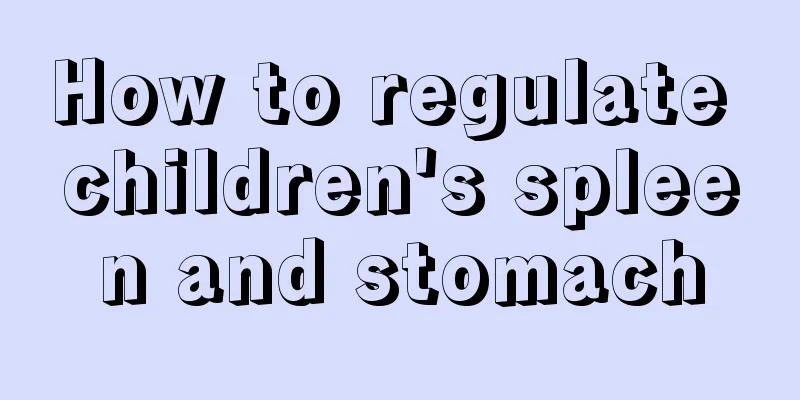What causes inguinal hernia in children?

|
Inguinal hernia is the most common disease in pediatric surgery. It is mainly manifested by a raised lump in the groin when the child cries or exerts force. It is usually congenital, mostly occurs in premature babies, and is usually a boy. So why do children get this disease? 1. Reducible hernia Usually, a swelling in the groin appears or increases in size when a child is crying, exercising vigorously, has dry stools, standing, or exerting abdominal force, and sometimes extends to the scrotum or labia; the swelling becomes soft or returns to the abdominal cavity when the child is lying down, the abdominal pressure is reduced, or pressed with the hands. The sound of air passing through water can often be heard during the return. After the return, the subcutaneous ring on that side can be felt to be enlarged and the spermatic cord thickened. When the child coughs or exerts abdominal force, there is a sense of impact when the fingers touch the inside of the subcutaneous ring. The swelling will no longer appear when the fingers press on the inner ring opening, and it will reappear when the fingers leave the subcutaneous ring. This situation is called a reducible hernia. Generally, there are no symptoms when the hernia contents descend, but older children may have a feeling of falling. 60% of male indirect hernias are on the right side and 30% are on the left side. 2. Incarcerated hernia Once the hernia becomes incarcerated (the hernia mass cannot be returned to the abdominal cavity), the abdominal pain will intensify, the patient will cry incessantly, and then there will be symptoms of intestinal obstruction such as vomiting, abdominal distension, and difficulty in defecation. An oval swelling can be seen in the groin or scrotum, which is hard in texture and painful to touch. If the hernia is incarcerated for a long time, the skin will be red and swollen. If the intestine cannot be returned for a long time, serious complications such as intestinal ischemia and necrosis may occur. 3. Treatment The best treatment for inguinal hernia in children is surgery. The best time to perform surgery is after 6 months. However, if an incarcerated hernia occurs, surgery should be performed early to prevent repeated incarceration and serious consequences. (1) Non-surgical treatment When children under 6 months old are not suitable for surgery due to serious illness, they can be temporarily treated with hernia belt therapy in the hope that they will heal on their own. The method is to first return the hernia contents and then use a hernia belt or gauze compression method to compress the internal ring opening to prevent the hernia contents from falling out. When using it, it should be placed in a proper position and the hernia contents should be observed at any time to see if they are dislodged. Otherwise, it will not only have no therapeutic effect but may cause the hernia contents to become incarcerated. Therefore, surgical treatment is still recommended for children with inguinal hernia. (2) Surgical treatment Suitable for inguinal oblique hernia in children over 6 months old and with a history of incarceration. Generally, a transverse abdominal muscle incision is used, and the hernia sac is high ligated through the inguinal or abdominal region. Routine exploration of the contralateral side is not recommended in China unless bilateral inguinal hernia has been diagnosed before surgery. In recent years, pediatric laparoscopy has been used both at home and abroad to perform high ligation of the pediatric hernia sac. It is less traumatic, safe and reliable, has a quick recovery, and is less likely to affect the development of the spermatic cord and testicles. It can treat bilateral hernias at the same time or treat one side and explore the opposite side without increasing pain. Chronic diseases such as chronic cough, dysuria, and constipation should be treated before hernia surgery to prevent recurrence after surgery. |
<<: What can children eat to get better quickly when they have a cough?
>>: What are the dangers of a child having a persistent low-grade fever?
Recommend
Why does my child keep having fever?
Once a child gets sick in life, it will make pare...
Treatment for recurring fever in children
I believe that friends who have children at home ...
What is the standard for the amount of milk a newborn should eat?
The arrival of a new life, while bringing joy and...
What causes cold hands and feet in newborn babies?
Newborns are the most vulnerable group that deser...
Symptoms of adenoid hypertrophy in children
When it comes to adenoids hypertrophy, many peopl...
Blisters on baby's feet
If blisters appear on the baby's feet, you ne...
What is the cause of the child's spitting?
Children often tend to foam at the mouth, which o...
When is the best time to have surgery for droopy eyelids in children?
Ptosis in children is basically caused by genetic...
Eight-month-old baby's eye bags are red
The red eye bags of eight-month-old babies are ma...
What to do if your child is a little introverted
The formation of a child’s personality is influen...
My child suddenly can't hear clearly, what's going on?
Suddenly, the child cannot hear clearly. This not...
What causes joint cracking in children?
The ligaments of babies seem to be relatively wea...
What to eat when children sweat
If children show signs of sweating during daily l...
Best height increase pills
Some people are very dissatisfied with their heig...
Can the baby's full-month vaccination be postponed?
Vaccines are a very common thing in people’s dail...









